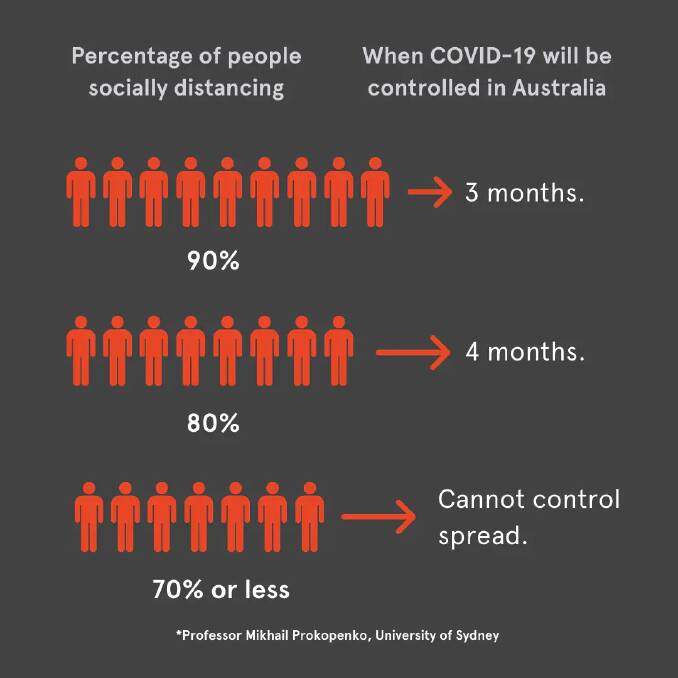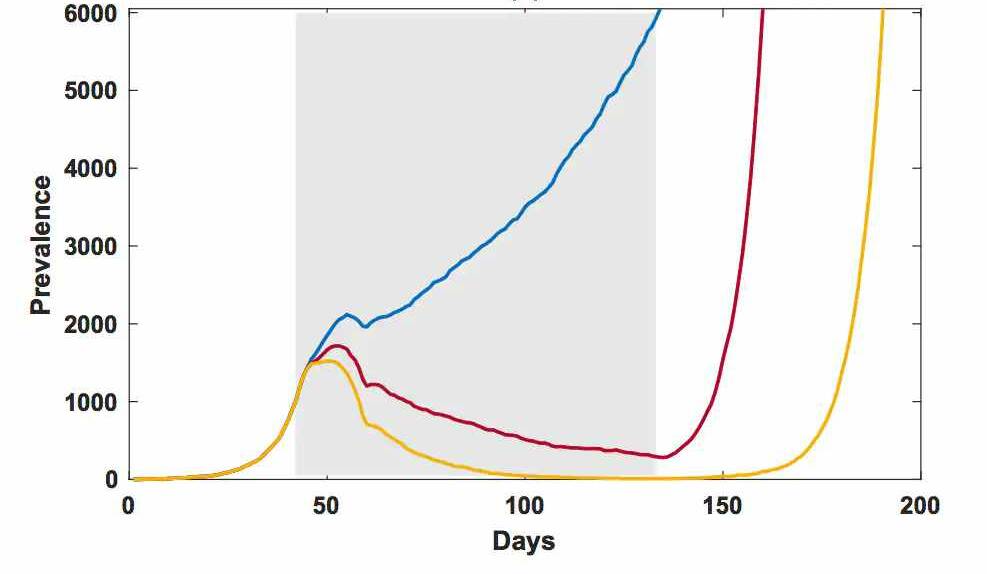
Everyone wants to know when this curse will be gone.
Subscribe now for unlimited access.
or signup to continue reading
The answer is: it depends on you. Three months at the very best; maybe never.
If nine out of 10 of us stay at home and don't go to work, it could be beaten in three months, according to research just published.
If less than seven out of 10 of us stay at home and don't go to work, it could go on indefinitely.
Professor Mikhail Prokopenko, whose team did the research, told The Canberra Times we should know within weeks whether the current approach is working.
If the numbers infected start to fall and keep falling, there could be virtually no cases in Australia by the middle of May.
READ MORE:
But anything short of the strictest, stay-at-home compliance with tough "social distancing" will not end coronavirus (or COVID-19 as it's also known) in this country.
"If we want to control the spread of COVID-19 - rather than letting the disease control us - at least 80 per cent of the Australian population must comply with strict social distancing measures for at least four months," the leader of the team at the University of Sydney said.
"However, if 90 per cent of the population complies, then the duration could be as short as 13 to 14 weeks - meaning if we began tomorrow we could expect a control of COVID-19 by July.
"Conversely, if less than 70 per cent of the population is adopting social distancing measures, we cannot suppress the spread of the pandemic and any social distancing could be a fruitless effort."
By social-distancing, he means staying at home. Wherever we are, he said we should keep apart anyway but the key was not going to work with interaction with others.
Social distancing 90 per cent means, in a household of one, staying home for nine days out of 10.
In a household of two, it means one of the couple could go to work every five days and the other stay at home. They could alternate each week.
He doesn't rule going out to shops - but it has to be minimal and with minimal contact and lots of hand washing after. No crowds.
He and a team from the University of Sydney have crunched numbers under different scenarios: just keeping known cases in isolation; closing schools; "social distancing" to different extents.

His study indicated school closures don't alter the spread of the virus very much, perhaps delaying the peak by a couple of weeks.
The government is toughening up the rules - what was open yesterday is closed today.
But there are inconsistencies: nail salons are closed but hairdressers are open; funerals are limited to 10 people but weddings to only five - leading to all kinds of questions on social media like 'Why can't I have my wedding in a department store'?"
Social epidemiologist (expert on disease spread), Dr Kathryn Bowen of the ANU, is uneasy about a lack of clarity. If the message is clear, people are more likely to act on it.

"The key is to be clear and consistent and not contradictory. Then ordinary people can be confident in the decisions they make."
She contrasts Australia with New Zealand, where the government has spelled out the four stages of restriction. Prime Minister Jacinda Ardern is strong and unambiguous.
The message here comes from the multiple voices of the federal government, states and territories.
- For information on COVID-19, please go to the ACT Health website or federal Health Department's website.
- You can also call the Coronavirus Health Information Line on 1800 020 080
- If you have serious symptoms, such as difficulty breathing, call Triple Zero (000)
We have removed our paywall from our stories about the coronavirus. This is a rapidly changing situation and we want to make sure our readers are as informed as possible. If you're looking to stay up to date on COVID-19, you can also sign up for our twice-daily digest here. If you would like to support our journalists you can subscribe here.


